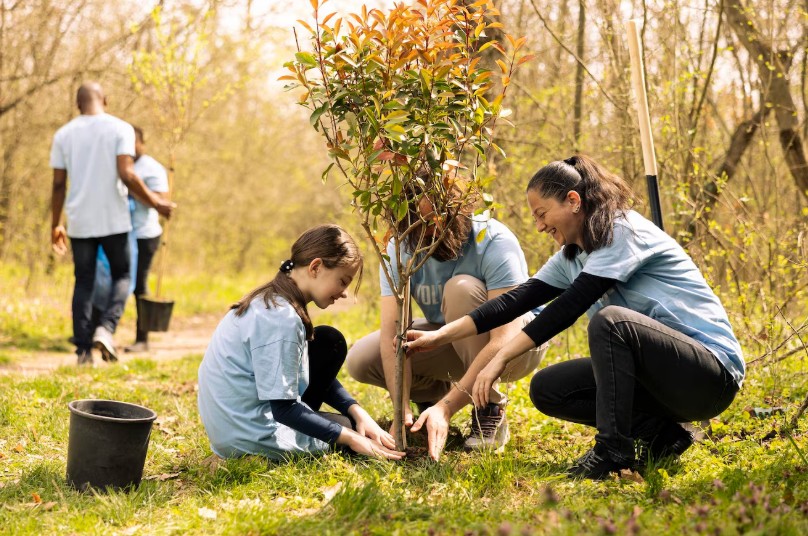How to Find the Best Tree Nursery: Expert Tips for Thriving Trees and Landscapes
Searching for the perfect tree nursery? If anything, you’ve probably spent hours scrolling through Google Maps, calling around, or wandering big-box garden centers only to leave empty-handed (or, worse, with a sad-looking sapling and zero advice on keeping it alive). Here’s the thing: finding a reliable tree nursery that offers healthy plants, knowledgeable staff, and trustworthy advice isn’t always as easy as it sounds. The stakes are high, too—trees are long-term investments in your property and the environment. Planting the right tree, in the right spot, at the right time can mean the difference between a thriving landscape and years of frustration (not to mention wasted money).
But let’s not get discouraged! The good news is, with the right know-how and a little insider guidance, you can absolutely find a local nursery that meets your needs. In this article, We’ll walk you through everything you need to know—how to find the best tree nurseries in your area, why buying trees locally matters, what to look for in a quality nursery, and hands-on tree care tips and a practical planting trees guide you won’t find on a generic product tag. Whether you’re looking to create backyard shade, boost curb appeal, or restore a bit of nature to your community, you’ll find actionable advice here. Ready to grow something great? Let’s dig in.
The Power of Buying Trees Locally
If you’ve ever been tempted to order trees online, you’re not alone. But here’s the truth: nothing beats buying trees locally from a reputable nursery in your area. Why? Because local nurseries do more than just sell plants—they’re hubs of expertise, community, and stewardship. And the trees themselves? They’re usually grown in the same climate and soil conditions you face in your backyard, giving them a massive head start.
Benefits of Local Tree Nurseries
Better survival rates: Locally grown trees are already acclimated to your region’s weather, pests, and diseases. Studies from the USDA Forest Service suggest that native or regionally adapted trees tend to have significantly higher survival rates—especially in urban and reforestation settings—compared to species sourced from distant climates, due to better alignment with local soil, climate, and ecological conditions
Expert advice: Staff at local nurseries (the good ones, anyway) know their stuff. They can offer personalized recommendations on species, planting locations, and care—something a faceless online retailer just can’t match.
Healthier stock: Trees at reputable nurseries are typically better cared for, with roots that haven’t been stuffed in a box for days. You can check their current stock and inspect the plant in person, checking for signs of disease, pest damage, or poor pruning. (Pro tip: Always look for a well-formed central leader and healthy, white roots.)
Support for your community: When you buy from a local business, your dollars stay in the community, supporting jobs and green space initiatives. Many nurseries even partner with local schools or parks—ask about it!

How to Find the Best Tree Nursery: What to Look For
(and What to Avoid)
So, how do you separate the top-notch nurseries from the ones just looking to clear inventory? Here are the practical steps we use (and recommend) when searching for the best tree nurseries in the US—or, really, in your own zip code.
Key Signs of a Quality Tree Nursery
Clean, organized grounds: Healthy nurseries take pride in their space. Plants are labeled, well-watered, and properly spaced. If you see wilting, weeds, or a jumble of half-dead stock, consider it a red flag.
Knowledgeable staff: Ask questions. Good nurseries welcome curiosity and offer clear, practical advice. If a staffer can’t tell you the mature size of a tree or doesn’t ask about your soil and sunlight, that’s a warning sign.
Diverse, regionally appropriate selection: The best nurseries stock species that actually thrive in your area. Look for natives or well-adapted exotics. A nursery that offers only one kind of maple or cherry is probably not invested in your long-term success.
Visible health of trees: Inspect trunks for wounds, roots for circling (a sign of root bound plants), and leaves for discoloration. Don’t be shy—pick up pots, check the root ball, and ask to see the tree out of its container if you’re not sure.
Questions to Ask Before Buying
It sounds basic, but the questions you ask can reveal a lot about a nursery’s commitment to quality. Here are a few:
Where were these trees grown? (Locally grown is almost always better.)
How long have they been on-site?
What kind of soil and sun do they need?
Can you recommend tree care tips for the first year?
Is there a warranty or guarantee on your plants?
And don’t forget to check reviews—Google, Yelp, and Facebook can offer honest feedback from real customers. Just take extremes (both glowing and scathing) with a grain of salt, and look for patterns.
Red Flags: When to Walk Away
Not all nurseries are created equal. Here’s what to avoid:
Poorly labeled plants (if they don’t know what it is, do you want to risk it?)
Generic advice (“Just water it a lot” is not a real care plan)
Signs of disease or pests, like sticky residue, holes in leaves, or obvious mold
Pushy sales tactics—good nurseries want you to succeed, not just make a quick buck
Trust your gut. If something feels off, keep looking.
What Sets the Best Apart?
Top tree nurseries share a few things in common:
Regionally appropriate stock
Staff who actually love plants (you can tell—just ask them what their favorite tree is!)
Transparent pricing and guarantees
Educational resources—like free guides, workshops, or even a YouTube channel
Of course, there are hundreds more excellent nurseries out there. Ask neighbors, check local gardening groups, or even visit your state’s extension office website for recommendations.
Buy Trees Locally: How to Choose the Right Tree for Your Space
Okay, so you’ve found a great tree nursery. Great! Now comes the fun (and sometimes overwhelming) part—choosing the right tree for your property. It’s not just about grabbing whatever’s on sale or looks tallest. The tree you pick will shape your landscape for decades, so a little planning goes a long way.
Factors to Consider
Space: How big is the planting area? Will the tree have enough room at maturity (both height and spread)? Crowded trees often develop poor structure or cause headaches with roots in foundations and drives.
Soil: Is your soil sandy, loamy, or clay-heavy? Most nurseries can help you do a quick soil test. Some trees—like oaks—hate soggy soil, while willows thrive in it.
Sunlight: Full sun, partial shade, or deep shade? Planting a sun-loving tree in a shady spot is a recipe for slow growth and disease.
Purpose: Are you looking for shade, privacy, wildlife habitat, flowers, or fruit? Be honest about your goals—sometimes a fast-growing privacy screen makes more sense than a specimen tree.
Maintenance: Some trees are practically set-and-forget; others drop messy fruit or need regular pruning. Ask about pest and disease resistance, too.
Popular Tree Choices by Region
Northeast: Sugar maple, eastern redbud, American beech
Southeast: Southern magnolia, bald cypress, live oak
Midwest: Red oak, serviceberry, Kentucky coffeetree
West Coast: Coast redwood, Pacific dogwood, western red cedar
Southwest: Desert willow, mesquite, Texas mountain laurel
And don’t forget about native species! They’re generally lower-maintenance, more resilient, and better for local pollinators and wildlife.

Tree Care Tips: Ensuring Healthy Growth from Day One
So you’ve picked the perfect tree, brought it home, and you’re staring at a root ball wondering, “Now what?” Trust us, we’ve been there (and learned a few lessons the hard way). Proper care in the first few years makes all the difference between a thriving tree and a struggling one. Here’s what you need to know, whether you’re planting a stately oak or a small flowering cherry.
Before You Plant: Preparation Matters
Site selection: Double-check for power lines, underground utilities, and proximity to buildings. Trees grow—sometimes faster than you’d expect. The old saying, “Right tree, right place,” really does matter.
Soil preparation: Loosen soil at least twice the width of the root ball. Amend only if your nursery recommends it—overly rich soil can actually discourage roots from spreading.
Watering plan: Have a hose or bucket ready. New trees need consistent moisture, especially in the first year.
Planting Steps: The Basics (and a Few Pro Tips)
Dig a saucer-shaped hole about 2-3 times wider than the root ball, but no deeper.
Remove the tree from its container and gently tease apart any circling roots.
Set the tree so the root flare (where roots meet trunk) is just above ground level. Planting too deep is a common (and fatal) mistake.
Backfill with native soil, tamping lightly to remove air pockets.
Water thoroughly—soak the root zone until the soil is moist but not swampy.
Mulch with 2-3 inches of wood chips, keeping mulch away from the trunk.
Stake only if necessary (windy sites or top-heavy trees); remove stakes after one year.
Aftercare: Keeping Your Tree Healthy
The first two years are critical. Here’s what you should do:
Watering: Deep water once a week (more in hot/dry spells). Don’t just sprinkle the surface—a slow soak at the root zone is best.
Mulching: Refresh mulch annually to retain moisture and suppress weeds, but always keep it off the trunk (“volcano mulching” is a tree killer).
Pruning: In the first year, remove only dead or broken branches. Save shaping for future years.
Monitoring: Watch for pests, diseases, and signs of stress. Early intervention is key.
Remember, patience is essential—most trees spend their first year establishing roots, so growth above ground may seem slow. That’s normal!
Key Takeaways: Planting Success Starts Here
Buy trees locally for better health, expert advice, and community support.
Choose nurseries with knowledgeable staff, regionally appropriate stock, and a commitment to your success.
Assess your site and select the right tree for your space, soil, and sunlight.
Plant with care: proper depth, plenty of water, and mulch (but not too much!) set your tree up for success.
First-year care is critical—water deeply, mulch well, and monitor for problems.
Ask questions—good nurseries love to share their expertise and want you to succeed.
Patience pays off: healthy trees grow slowly at first, but the long-term rewards are huge.
Conclusion
Choosing the right tree nursery really does make all the difference in your gardening experience. With the right knowledge, reliable sources, and a bit of patience, you can transform your landscape—and maybe even your community. Remember, trees are one of the few investments that truly grow in value over time. So take your time, ask questions, and lean on local experts. Whether you’re planting a single shade tree or restoring a whole backyard, the right nursery and a thoughtful approach will set you (and your trees) up for decades of success.
Ready to get started? Head out to your local nursery, chat with the pros, and put those green thumbs to work! If you're in Idaho and looking for expert guidance, healthy trees, and personalized service, contact Melad Tree Farm today to schedule a visit or check tree availability.
